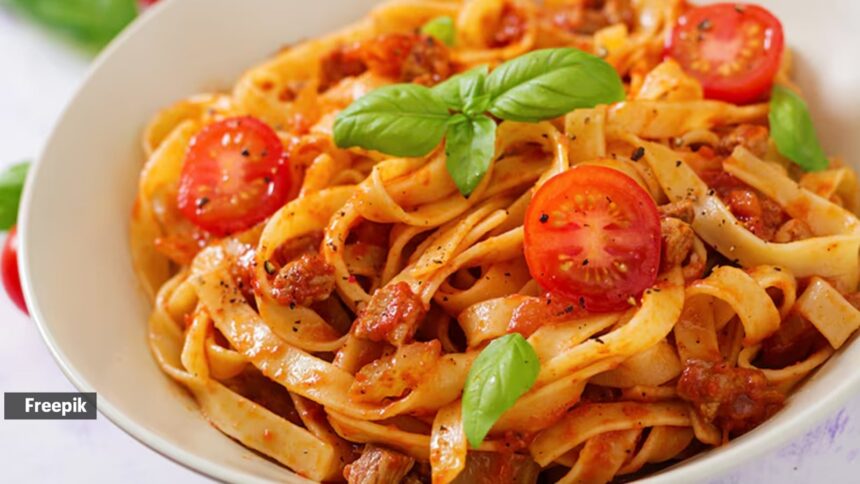Pasta might be a carbohydrate-rich food, made primarily of flour, butter and cheese — but this delicious Italian dish has found lovers and fanatics worldwide. A popular myth circulating online recently suggests that pasta requiring a longer cooking time is inherently healthier. Indianexpress.com asked experts and found out the truth.
Meenu Balaji, Chief Nutritionist at Pragmatic Nutrition, told that the concept that “longer the pasta takes to cook, the less processed it is” is not true. “If that’s the case, then fresh pasta cooks the fastest. Also, when you cook at higher altitudes, it takes longer to cook pasta, since water boils at a lower temperature,” she pointed out.
According to Balaji, there are various reasons as to why some takes longer to cook:
1. Thickness: Certain types of pasta like rigatoni or farfelle take longer to cook than others. It also is affected by the protein content.
2. Shapes: Some pasta shapes are uneven like shell-shaped and therefore need more time to cook.
3. Pasta to water ratio: Using a smaller pot or lesser water can also increase the cooking time.
Madhavi Savani, Clinical Dietician, Apollo Hospitals, added that while considering pasta, it is important to check what are they made up of. “Pasta made from refined wheat flour and pasta made in white puree are not recommended for regular consumption. Regular intake of such refined products may contribute to unhealthy weight gain and poor digestion over time,” she said, adding that if you wish to include pasta in your diet, opt for versions made with semolina (sooji) instead.
According to her, these are comparatively nutritious and can be further improved by adding vegetables during
preparation. This helps in making the meal more balanced.
However, healthier versions of pasta should be eaten in moderation. “Having pasta once a month is a reasonable approach if you are aiming to maintain a balanced and health-conscious diet,” said Savani, adding that when purchasing pasta, it is important to read the ingredient labels carefully.
She also encouraged avoiding instant pasta varieties that cook within 4 to 8 minutes, as they are typically highly processed and often contain added preservatives, artificial flavors, or unhealthy fats that are not beneficial to your health.
Balaji shared a few quick tips to help you make sure you are eating the best of the lot:
1. Colour: Good quality pasta made from durum wheat is usually pale yellow in colour. Of course, if you go for a gluten-free option the colour would vary depending on the ingredients.
2. Texture: A uniform texture which cooks al dente. Some pasta may have a slight rough texture. This shows it was bronze-cut and can absorb sauces better.
“If you are eating pasta regularly, fresh home-made ones are perfect. If you are choosing processed pasta, look for something with fewer ingredients without fillers like lecithin, gum or starch,” said Balaji, while encouraging people to add a lot of fresh vegetables and a lean source of protein like a chicken pasta salad, instead of having a plain white sauce pasta.








